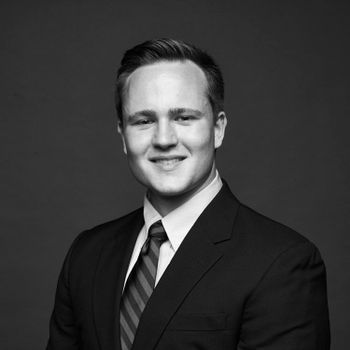Professor coins term to describe White people who can’t see racism
The term applies to White people who purportedly fail to see racism within their institutions.
The professor focused her remarks on White people that 'can be blind to racial inequity in their workplace.'
A professor coined a term to describe people who purportedly fail to see racism within their institutions.
Charlice Hurst — a management professor at the University of Notre Dame who studies “gender and race in the workplace” — penned an article for the Stanford Social Innovation Review called “The ‘Not Here’ Syndrome.”
After describing an incident in which an unnamed white colleague asked Hurst, who is Black, how “Black people felt realizing that racism still exists in America” following the 2016 election, Hurst defined the “not here” syndrome as “denying that racism is a problem in your own organization, even when you are willing to acknowledge it as prevalent in society, outside your own organization or home.”
“The ‘not here’ syndrome is at work when someone bemoans Trump’s election but confidently declares, as this colleague did, ‘There’s no racism here; at least none that I’ve seen,’” Hurst wrote. “Racism was only ‘out there, not here.’”
[RELATED: Investigation finds no evidence of FSU founding president’s supposed racism. ‘Anti-racists’ still want him canceled]
“Ironically, while my colleague trusted me to represent Black people’s views on the racism that Trump and his supporters so boldly expressed, he did not trust me to speak about what I have personally experienced as the only Black faculty member at our school,” she continued. “His epiphany that racism persists in the United States left him unconvinced that it is a problem at our own university. And there was nothing I could say to convince him otherwise.”
As an example, Hurst explained how she told another colleague that a student in her class had “declared support for white nationalism.” According to Hurst, the colleague — who responded “I’m sure you’ll figure out how to handle it” — conveyed that “he saw this student as a ‘bad apple’ rather than as a symptom of a rotten tree.”
“In his mind, there might be a few racist students at our university, but there was not enough racism to justify my alarm,” she said. “Yet, he showed sensitivity and concern in discussions we had about racial inequity outside of our university. He, too, had the ‘not here’ syndrome.”
Hurst also discussed possible reasons why White people “can be blind to racial inequity in their workplace.” Among other reasons, she postulated that “turning away” from evidence of racism “serves as psychological self-protection.”
“Denying or downplaying racism helps white people maintain the view that they, personally, hold no racial prejudice and, more critically, are disconnected from (and therefore not responsible for) the history of racism within the United States that has served to benefit them politically, socially, and economically,” she explained. “Nobody wants to dwell on painful truths that reflect poorly upon them and their friends, family, and beloved institutions.”
[Related: Academic ‘study’ based on tweets claims to prove ‘racism’ in the workplace]
Hurst also took aim at leading corporations’ diversity initiatives.
“Black people hired under these initiatives could encounter a culture that is as dismissive of their experiences and insights as ever,” she wrote, explaining that organizations which “signal commitment to racial diversity often encounter a countervailing wave of heightened racism denial among white employees.”
Hurst told Campus Reform that her remarks do not apply equally to all White people.
“I know plenty of white people who don’t have ‘not here’ syndrome,” she explained. “To be clear, I would never paint any group of people with such a broad brush.”
“My main point is that, based on research and observation, it’s a prevalent problem in organizations and that it may help explain our slow progress on racial economic equity,” she said, noting that there was not sufficient space in her article to discuss “examples of companies and leaders who are using effective means to address racial equity.”
Campus Reform reached out to Hurst for additional comment; this article will be updated accordingly.
Follow this author on Twitter: @BenZeisloft

